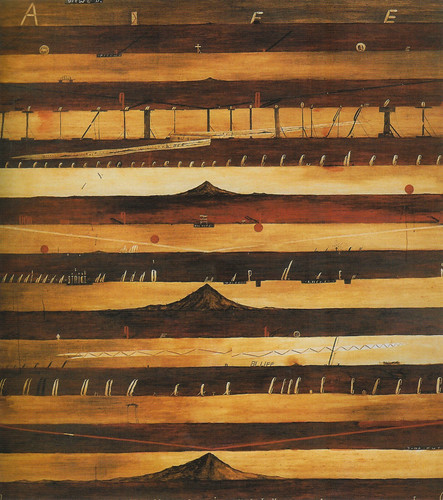Pluralism is used, often in different ways, across a wide range of topics to denote a diversity of views, and stands in opposition to one single approach or method of interpretation.Pluralism in art refers to the nature of artforms and artists as diverse. The cultural context of art is all encompassing in its respect for the art of the world's cultures.

How would you describe New Zealand's current dominant culture?
The current New Zealand is dominated mostly by kiwi culture. In other words, European or white culture. This mainly because the majority of population living is kiwi people. New Zealand is a multicultural country and i think there is a mixture of all kinds of culture which makes this country so colourful. Both European and Maori culture blend together with Asian and other cultures to make a beautiful taste of living.
Before 1840, what was New Zealand's dominant culture?
Before 1840, the New Zealand’s dominant culture is Maori culture.Māori culture is the culture of the Māori of New Zealand, an Eastern Polynesian people, and forms a distinctive part of New Zealand culture. Within the Māori community, and to a lesser extent throughout New Zealand as a whole, the word Māoritanga is often used as an approximate synonym for Māori culture, theMāori suffix -tanga being roughly equivalent to the qualitative noun ending "-ness" in English.


How does the Treaty of Waitangi relate to us all as artists and designers working in New Zealand?
As we all know The Treaty of Waitangi is a treaty first signed on 6 February 1840 by representatives of the British Crown and various Māorichiefs from the North Island of New Zealand. I believe Treaty of Waitangi led to the the mixture of European culture which in turn led to the mixture of European and Maori arts. European got inspiration from Maori people and Maori people got inspiration from European, and in my opinion, art is all about sharing ideas and thoughts.


How can globalization be seen as having a negative effect on regional diversity in New Zealand in particular?
In my opinion, globalization having a negative effect on regional diversity because it can make people loose a lot of culture like Maori culture. Artists need have different ideas to share, everyone's art is unique. If everything is same and we loose the regional diversity, we won’t have anything to share.

Shane Cotton's paintings are said to examine the cultural landscape. Research Cotton's work 'Welcome'(2004) and 'Forked Tongue' (2011) to analyze what he is saying about colonialization and the Treaty of Waitangi.
Cotton's work evocatively includes both Maori iconography and culture, such as shrunken heads, mokomokai, and native birds such as tui, and European symbols and items. His paintings have explored questions of colonialism, cultural identity, Maori spirituality, and life and death. Many of his paintings go into depth of primitive ideas especially through Maori whakapapa.

http://en.wikipedia.org/wiki/Pluralism
http://en.wikipedia.org/wiki/Treaty_of_Waitangi
http://en.wikipedia.org/wiki/Shane_Cotton
"Artists need have different ideas to share, everyone's art is unique." I would say that everyones art is unique to a certain point, unique in the way that they pieced together ideas and references and made it their own. However, there is always going to be art that has used other artists ideas or taken something from some culture that is not theirs or has already been used before. No matter how hard people try for originality there is always going to be someone somewhere that has used an idea you have used. There is nothing that is new under the sun. “That which has been is what will be, that which is done is what will be done, and there is nothing new under the sun.” Ecclesiastes 1:9. (Is there such thing as originality, 2011).
ReplyDelete"Also Hussein Chalayan says that technology is the only thing that you can do new things technology creates new possibilities it creates also new realities and new connections between things that maybe you couldn't do before. It is an exciting tool but then again depends on how it is used."- Hussien Chalayan. http://www.husseinchalayan.com/blog/?tag=evolution. I think that this creates an interesting point that technology creates new things that are exciting in the art world and in the world there are more up coming and exciting things made with technology that haven't been done before.
ReplyDeleteI agree with you that The cultural context of art is all encompassing in its respect for the art of the world's cultures. Before 1840, the New Zealand’s dominant culture is Maori culture. When Europeans arrived, they brought with them Western artistic traditions. Now New Zealand is a cosmopolitan culture. New Zealand's arts and culture was obtained from all races, resulting in a combination of Maori, European, Asian and Oceania were the characteristics. New Zealand's current dominant culture is diversified.
ReplyDeleteGlobalization is one cannot ignore the 'flattening' effect of the practice. The world is now at a loss in the attempt to guard and flaunt diversity that is enriching.
“Forked Tongue”, these symbols or metaphors become starting points for an elaboration on the links between the physical, historical and spiritual landscapes. In Shane Cotton’s art, this ambivalence about the land and the cultural landscpae of New Zealand.
Cotton uses very symbolic imagery in his work. He uses a cultures collied theme in many of his works. He combines maori cultural imagery and european tools and symbols to recreate the colonization of NZ. I admire how his works are not obvious at first glance. Many of his works like the piece "needle work" are made up with detail and you wont tell unless you look close. Especially when viewing his work out of a book of the internet. These details are made up of european tools, flags, kitchen utensils, tikis etc. These objects all add to the contrasting of both the Maori and the Europea cultures. Therefore representing the colonization.
ReplyDelete